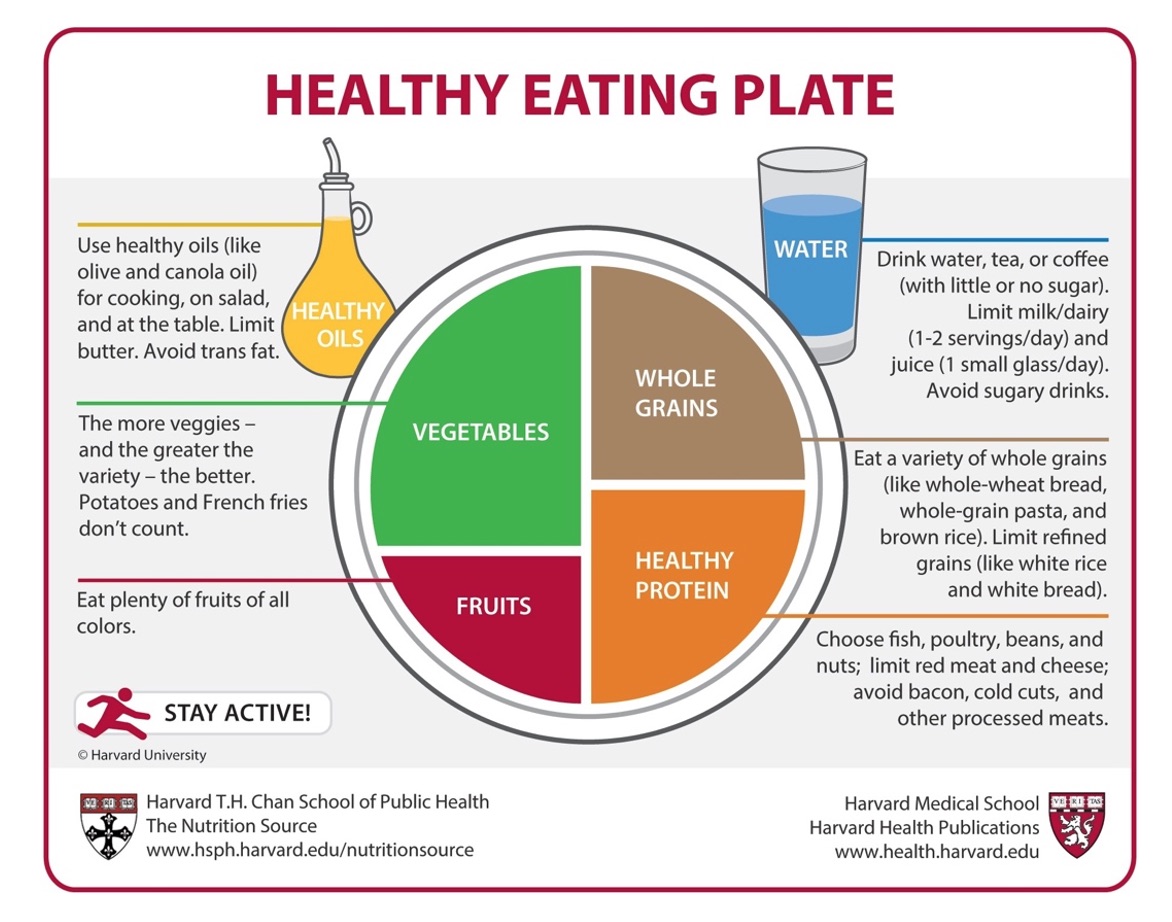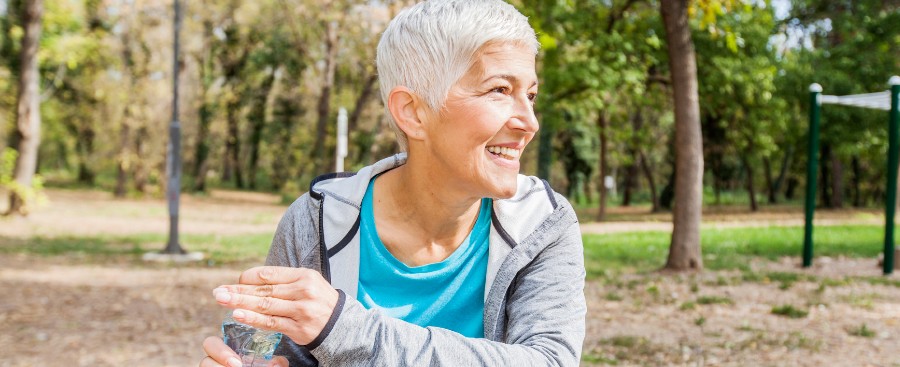 By Bill Pienias, Special AFS Contributor
By Bill Pienias, Special AFS Contributor
63-year-old Maxey Gillarci squinted at her watch against the light from the setting sun and exhaled. “That’s it. I’m done for today”. The events director for a law firm in Tampa, Florida had hit her goal of 7,000 steps that day. Gillarci used to hit 7,000 steps by noon before the COVID-19 pandemic sent her home to coordinate the firm’s events from her computer.
“I used to walk thousands of steps a day, just doing my job,” said Gillarci. “I was constantly on the move from hotel ballrooms to the convention center to the stadium. Now, everything is virtual. I’m lucky if I get 1,000 steps a day at home.”
Gillarci struggled to maintain her weight in her newly sedentary job and worried about the long-term effects so much sitting would have on her health. She’s not alone in her quest for a healthier life.
About half of adults in the U.S. struggle with one or more preventable chronic diseases. Many of those can be blamed on poor eating habits and physical inactivity. Those chronic conditions include cardiovascular disease, high blood pressure, type 2 diabetes, cancer, and poor bone health. More than two-thirds of adults and nearly one-third of children and youth are overweight or obese.
The good news is we have more control than we may think over our health and our quality of life. When it comes to physical activity, small steps really do make a difference. In fact, a study cited by the National Institutes of Health of about 17,000 women with an average age of 72 found those who took 4,400 steps a day had a 41 percent lower risk of death than those who took 2,700 steps. Regular participation in physical activity reduces the risk of dying prematurely, but you don’t have to become a competitive athlete or a bodybuilder to enjoy the rewards.
That awareness often reduces one of the biggest stumbling blocks to physical fitness. After all, who wants to dedicate themselves to becoming an elite athlete in their 30s or 40s? For that matter, who has the time? Who has the money for an expensive gym membership or a stationary bike to work out at home?
Regular participation in physical activity reduces the risk of dying prematurely, but you don’t have to become a competitive athlete or a bodybuilder to enjoy the rewards.
Simple, inexpensive changes in our lifestyles can yield big rewards. Barring physical limitations, we can walk around the block. We can park a little farther away from the store or take the stairs instead of the escalator at the mall.
Your next question may be, “How many steps should I take?” The gold standard for years was 10,000 steps. But now, research shows you can benefit from as few as 5,000, especially if you’re not used to walking much at all. What does that look like? Consider this: most people average 2,500 steps a day just doing normal activities like walking to the bathroom, strolling around the office and getting the mail.
How you get those steps is also important. For example, taking the stairs is more strenuous than walking to the end of the driveway to get the paper. The number of steps may be the same, but the amount of energy you expend is far different.
Wearable technologies like smartphones and watches make it easy to track how many steps you take every day. Some apps will plot your route, monitor your heart rate and remind you to drink more water. All you have to do is put on your shoes and walk out the door.
If you’re looking for something beyond just walking, the Department of Health and Human Services offers some general guidelines:
Aerobic activity. Shoot for at least 150 minutes (2.5 hours) of moderate aerobic activity or 75 minutes (1.25 hours) of vigorous aerobic activity a week, or a combination of moderate and vigorous activity.
Moderate activities might include:
- brisk walking
- water aerobics
- dancing
- gardening
- tennis (doubles)
- biking slower than 10 miles per hour
Vigorous activities include:
- hiking uphill or with a heavy backpack
- running
- swimming laps
- aerobics
- tennis (singles)
- cycling 10 miles per hour or faster
- jumping rope
Strength training. Do strength training exercises for all major muscle groups at least twice a week. Aim to do a single set of each exercise, using a weight heavy enough to tire your muscles after 12 to 15 repetitions. If you don’t have weights at home, you can use your body weight with exercises such as pushups and body squats or fill up plastic jugs with water or sand. Use your bathroom scale to weigh them. If you’re lifting a weight with each hand at the same time, make sure they weigh the same. Of course, physical activity is only one part of a healthy lifestyle. You can’t out-walk a bad diet. You can walk two miles to the store, but if you buy cookies and cake and eat them all when you get home, the steps you took won’t do you much good.
The American Cancer Society estimates that at least 18 percent of all cancers diagnosed in the U.S. are related to body fat, physical inactivity, alcohol consumption, and/or poor nutrition, and could be prevented.
The Centers for Disease Control and Prevention (CDC) published Dietary Guidelines for Americans 2015-2020 which offers an overview of what a healthy diet should look like.
- Emphasizes fruits, vegetables, whole grains, and fat-free or low-fat milk and milk products
- Includes lean meats, poultry, fish, beans, eggs, and nuts
- Is low in saturated fats, trans fats, cholesterol, salt (sodium), and added sugars
If you’re a visual learner, a graphic from Harvard University researchers may be helpful. The Healthy Eating Plate shows you exactly what your diet should look like.

Copyright © 2011, Harvard University. For more information about The Healthy Eating Plate, please see The Nutrition Source, Department of Nutrition, Harvard T.H. Chan School of Public Health, www.thenutritionsource.org, and Harvard Health Publications, www.health.harvard.edu.
As you can see, the plan emphasizes vegetables and fruit, whole grains, protein, healthy plant oils, and water. Limit the amount of red meat you eat and avoid processed meats like bacon and sausage.
If it all seems like a lot to tackle, consider the benefits. The American Heart Association says a healthy diet and commitment to physical activity can deliver some big results:
- Lower risk of heart disease, stroke, type 2 diabetes, high blood pressure, dementia and Alzheimer’s, several types of cancer, and some complications of pregnancy
- Better sleep, including improvements in insomnia and obstructive sleep apnea
- Improved cognition, including memory, attention and processing speed
- Less weight gain, obesity and related chronic health conditions
- Better bone health and balance, with less risk of injury from falls
- Fewer symptoms of depression and anxiety
- Better quality of life and sense of overall well-being
Faced with the prospect of working from home for months, Maxey Gillarci pledged to step away from her computer twice a day and walk her dog along the beach near her home. She watches the sunrise and the sunset and logs 7,000 steps a day. She says the only downside is that her aging yellow Lab wears out before she does. “Sometimes I just walk her around the block and take her home,” said Gillarci. “Then I head back out for the rest of my steps.”
President of FinFit Life, Bill Pienias, has been a leader in the insurance and fitness industries for over 24 years. He has built and led companies in the US and Europe, most notably being the President of AEGON’s largest Broker-Dealer, Vice President of WFG, CEO of The Salve Group and leading the recruiting and sales efforts as SVP of Foresters Financial. Bill is a native of Chicago, played quarterback at Brown University and enjoys being with his wife and three children


Join the Conversation!